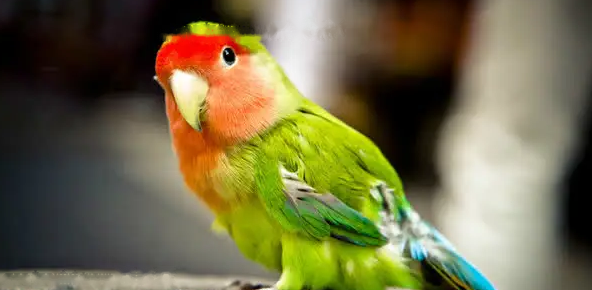
The aquatic plant tank focuses on aquatic plants landscaping, and the combination of bottom sand and rocks creates a beautiful natural ecology in the water, so it is charming. It is usually accompanied by a small number of small fish shrimp, such as lampfish, angelfish, short bream, etc., focusing on carbon dioxide, water quality and aquatic plant growth conditions, etc. How to get started for beginners, follow the pet editor to understand Bar.
1. The size and placement of the aquarium
1. The placement of the aquarium:
The first step is to choose the place where the aquarium is placed, because the The size can determine the size of the aquarium, and in principle, try to place it in a place to avoid sunlight. If you have a living room in your home, having the aquarium in the living room is a great idea.
2. Judging the size of the aquarium:
The aquarium must be adapted to local conditions, which can be determined according to your actual situation. If it is a super large aquarium (above 200cm), the pressure that the floor can withstand should be considered, especially for those who live upstairs. Because the load-bearing capacity of most living rooms is below 500kg/m2, aquariums above 200cm may break through this load-bearing limit.
2. The landscaping design of the aquatic plants tank
1. The planting position of aquatic plants:
The creation of aquatic plants landscape is greatly related to the selection of aquatic plants. , according to the different needs of the composition, you can choose different types of aquatic plants to achieve the best effect. In order to create a sense of visual depth and layering, water plants with different characteristics need to be planted in different locations.
2. Matching other materials:
Of course, in the selection of other matching materials in the aquarium, such as sinking wood, landscape stones, etc., you should pay attention to whether the selected materials will affect water quality. The dead wood is cleaned, and then soaked in water for several days, several liters, and try to make it spit out as much as possible.
3. The principle of selecting the bottom sand:
The selection of the bottom sand should also pay attention to the principle of not affecting the water quality. Generally, the bottom sand with weak acidity and diameter of 3-5 mm is selected as should. For example: quartz sand. The bottom sand purchased in the market usually has the phenomenon of surface oxidation, so before laying the bottom sand, it must be cleaned and disinfected.
4. The placement of scenery stones and sunken wood:
The placement of scenery stones and sunken wood must be well-distributed and well-defined (the main and secondary scenery should also be clearly defined) High, as far as possible in line with the law of perspective. Tall stone or sunken wood should be placed close to both sides of the tank, otherwise it will be too eye-catching.
3. General types and distribution of aquatic plants
1. Selection of foreground grass:
The aquatic plants in front of the landscape should not block other landscapes in the back. Therefore, the foreground grass is often selected from relatively low aquatic plants, such as mousse, staghorn moss, mini cow felt, cow felt, antler dwarf pearl, mini dwarf pearl, small yyjing and so on.
2. The choice of medium grass:
The selection of medium grass is basically medium and large grass. When small aquatic plants are used as medium grass, intensive planting should be adopted. Mainly, increase the fullness of the entire landscape. A single aquatic plant can be used as a mid-level grass, and you can choose large tuberous aquatic plants such as lotus root, water lily, and wave grass.
3. The choice of background grass:
The background grass is made of large shell-leaf grass or densely planted with high-stemmed aquatic plants as the background. Muzha grass is used to raise the height of aquatic plants to increase the fullness and front and rear levels of the aquarium landscape. Most of the background grasses are large aquatic plants, such as the large Uruguayan crown grass.
4. Color balance to decorate the grass:
a. Use color to decorate the landscape. Red water plants are warm-toned water plants. Adding a little red water plants to the whole green water plants can make the landscape more beautiful. The whole landscape will not be dull, thus increasing the liveliness of the landscape.
b. The red water plants include: purple lotus root, red abundance, big red leaves, red butterfly, big blood heart orchid, red willow, shamrock, red taro grass, red pine tail, red chrysanthemum grass, red kelp , cranberries! Red cloves, red leaves.
c. Red water plants from wide leaves to narrow leaves: red plum, purple lotus root, red kelp, big blood heart orchid, red leaf bottom, red butterfly, big red leaf, red willow, red lilac, small Cranberry, clover, red chrysanthemum, red feather grass, red pine tail.
d. Increase the highlights of the entire landscape through red water plants, which can not only widen the distance between the front and rear landscapes, but also add a little warm color to the cool green water plants.
IV. Precautions for planting aquatic plants
1. When purchasing aquatic plants, you should pay attention to selecting aquatic plants with healthy growth and healthy branches and leaves. Such aquatic plants are often easy to grow and live.
2. After purchasing aquatic plants, they must be disinfected first. First, the plastic baskets, lead strips and foam that contain temporary nutrients needed to wrap the plants need to be removed.
3. Don't rush to plant first. After carefully cleaning these aquatic plants, put them into the water of potassium permanganate diluted solution (concentration is 1/5000) for 30 minutes.
4. In this way, it is enough to kill the parasites, snails and polyps on the aquatic plants that may cause harm to the growth of fish as much as possible.
5. Before planting aquatic plants, classify and deal with them first. If rotten, unhealthy stems and leaves need to be removed. When planting, do not crush the ends of the aquatic plants or break the stems and branches, and pay special attention to protecting the roots of the aquatic plants, which are easy to rot after injury.
4. Nutrient fertilizers for aquatic plants
a. Generally divided into liquid fertilizers, base fertilizers, root fertilizers, etc.; according to the ingredients, they can be divided into: nitrogen fertilizers, phosphate fertilizers, potash fertilizers , iron fertilizer, trace element fertilizer, comprehensive fertilizer, etc.
b. Generally, the aquatic plants with more developed root system (pocket crown and shell essence) have better root fertilizer effect; while the rootless plants such as Moss are better to use liquid fertilizer. Nitrogen, phosphate, and potassium fertilizers contain the elements that plants require the most, called macronutrient fertilizers.
c, trace element fertilizers contain iron, calcium, magnesium, sulfur, manganese, boron, zinc, copper, molybdenum and other elements. Iron fertilizer contains the necessary elements for the synthesis of anthocyanins by red water plants.
![[Dog Training 5] The training method of pet dog dining etiquette](/static/img/12192/12192_1.jpg)




